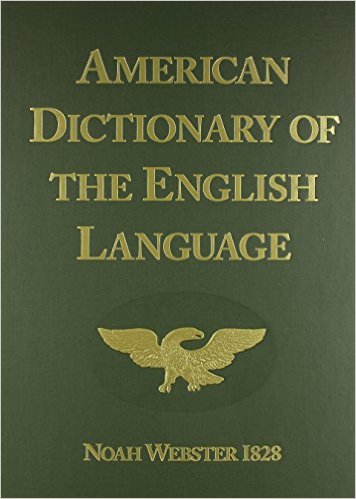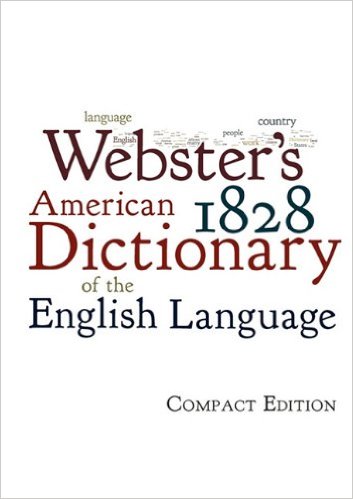|
Search, browse, and study this dictionary to learn more about the early American, Christian language. 
 1828.mshaffer.com › Word [gum]
1828.mshaffer.com › Word [gum]
GUM, n. The hard fleshy substance of the jaws which invests the teeth. GUM, n. [L. gummi.] The mucilage of vegetables; a concrete juice which exudes through the bark of trees, and thickens on the surface. It is soluble in water, to which it gives a viscous and adhesive quality. It is insoluble in alcohol, and coagulates in weak acids. When dry, it is transparent and brittle, not easily pulverized, and of an insipid or slightly saccharine taste. Gum differs from resin in several particulars, but custom has inaccurately given the name of gum to several resins and gum-resins, as gum-copal. gum-sandarach, gum-ammoniac, and others. The true gums are gumarabic, gum-senegal, gum-tragacanth,and the gums of the peach, plum and cherry trees, &c. Gum-elastic, or Elastic-gum, [caoutchouc,] is a singular substance, obtained from a tree in America by incision. It is a white juice, which, when dry, becomes very tough and elastic, and is used for bottles,surgical instruments, &c. GUM, v.t. To smear with gum. 1. To unite by a viscous substance.
|
Evolution (or devolution) of this word [gum]
| 1828 Webster | 1844 Webster | 1913 Webster |
|---|
GUM, n. The hard fleshy substance of the jaws which invests the teeth. GUM, n. [L. gummi.] The mucilage of vegetables; a concrete juice which exudes through the bark of trees, and thickens on the surface. It is soluble in water, to which it gives a viscous and adhesive quality. It is insoluble in alcohol, and coagulates in weak acids. When dry, it is transparent and brittle, not easily pulverized, and of an insipid or slightly saccharine taste. Gum differs from resin in several particulars, but custom has inaccurately given the name of gum to several resins and gum-resins, as gum-copal. gum-sandarach, gum-ammoniac, and others. The true gums are gumarabic, gum-senegal, gum-tragacanth,and the gums of the peach, plum and cherry trees, &c. Gum-elastic, or Elastic-gum, [caoutchouc,] is a singular substance, obtained from a tree in America by incision. It is a white juice, which, when dry, becomes very tough and elastic, and is used for bottles,surgical instruments, &c. GUM, v.t. To smear with gum. 1. To unite by a viscous substance. |
GUM, n.A tree; the Nyssa multiflora, called also black gum and sour gum.
GUM, n.1 [Sax. goma. See the next word.]The hard fleshy substance of the jaws which invests the teeth.
GUM, n.2 [Sax. goma; L. gummi; D. gom; Sp. goma; It. gomma; Fr. gomme; Gr. κομμι; Russ. kamed. See Class Gm, No. 12, 29.]The concrete mucilage of vegetables; a concrete juice which exsudes through the bark of trees, and thickens on the surface. It is soluble in water, to which it gives a viscous and adhesive quality. It is insoluble in alcohol, and coagulates in weak acids. When dry, it is transparent and brittle, not easily pulverized, and of an insipid or slightly saccharine taste. Gum differs from resin to several particulars, but custom has inaccurately given the name of gum to several resins and gum-resins, as gum-copal, gum-sandarach, gum-ammoniac, and others. The true gums are gum-arabic, gum-senegal, gum-tragacanth, and the gums of the peach, plum and cherry trees, &c. Nicholson. Hooper.
GUM, v.t.- To smear with gum.
- To unite by a viscous substance.
|
Gum
- The dense tissues which invest the teeth, and cover the
adjacent parts of the jaws.
- To deepen and enlarge
the spaces between the teeth of (a worn saw). See
Gummer.
- A vegetable secretion of many
trees or plants that hardens when it exudes, but is soluble in water;
as, gum arabic; gum tragacanth; the gum of the
cherry tree. Also, with less propriety, exudations that are not
soluble in water; as, gum copal and gum sandarac, which
are really resins.
- To smear with gum] to close with gum; to unite
or stiffen by gum or a gumlike substance; to make sticky with a
gumlike substance.
- To exude or from gum;
to become gummy.
- See Gum tree,
below.
- A hive made of a section of a hollow gum
tree; hence, any roughly made hive; also, a vessel or bin made of a
hollow log.
- A rubber overshoe.
|
| 1828 Webster | 1844 Webster | 1913 Webster |
|---|
Thank you for visiting!
- Our goal is to try and improve the quality of the digital form of this dictionary being historically true and accurate to the first American dictionary. Read more ...
- Below you will find three sketches from a talented artist and friend depicting Noah Webster at work. Please tell us what you think.
Divine Study
 
Divine Study
|
Window of Reflection
 
Window of Reflection
|
Enlightening Grace
 
Enlightening Grace
|
160
|
937 |
113
|
1020 |
186
|
1053 |

Gum GUM, noun The hard fleshy substance of the jaws which invests the teeth. GUM, noun [Latin gummi.] The mucilage of vegetables; a concrete juice which exudes through the bark of trees, and thickens on the surface. It is soluble in water, to which it gives a viscous and adhesive quality. It is insoluble in alcohol, and coagulates in weak acids. When dry, it is transparent and brittle, not easily pulverized, and of an insipid or slightly saccharine taste. gum differs from resin in several particulars, but custom has inaccurately given the name of gum to several resins and gum-resins, as gum-copal. gum-sandarach, gum-ammoniac, and others. The true gums are gumarabic, gum-senegal, gum-tragacanth, and the gums of the peach, plum and cherry trees, etc. GUM-elastic, or Elastic-gum, [caoutchouc, ] is a singular substance, obtained from a tree in America by incision. It is a white juice, which, when dry, becomes very tough and elastic, and is used for bottles, surgical instruments, etc. GUM, verb transitive To smear with gum 1. To unite by a viscous substance. |

|
| Hard-cover Edition |
368 |
 |
543 |
|
| Compact Edition |
353 |
 |
242 |
|
| CD-ROM |
303 |
 |
192 |
|
* As a note, I have purchased each of these products. In fact, as we have been developing the Project:: 1828 Reprint, I have purchased several of the bulky hard-cover dictionaries. My opinion is that the 2000-page hard-cover edition is the only good viable solution at this time. The compact edition was a bit disappointing and the CD-ROM as well. |
| [ + ] |
| Add Search To Your Site |
|
|
|
 1828.mshaffer.com › Word [gum]
1828.mshaffer.com › Word [gum]
